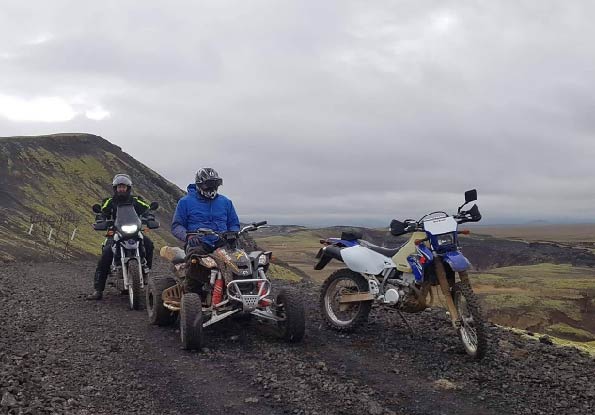
We recommend the following activities. For a short description of each activity, select the relevant activity.
Travel by car
Ride an engine powered vehicle
Horseriding
Hiking
Physical exertion and relaxing activities
Nature and wildlife
Angling and fly fishing
Wildlife hunting
Other activities are equally exciting but are not presented on the website. Always be careful when doing the activity, and don't take more risks than necessary; getting home safely is better.
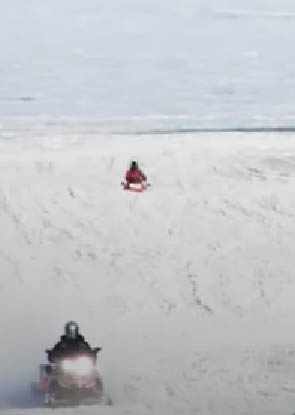
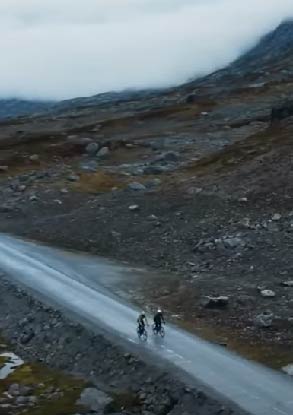


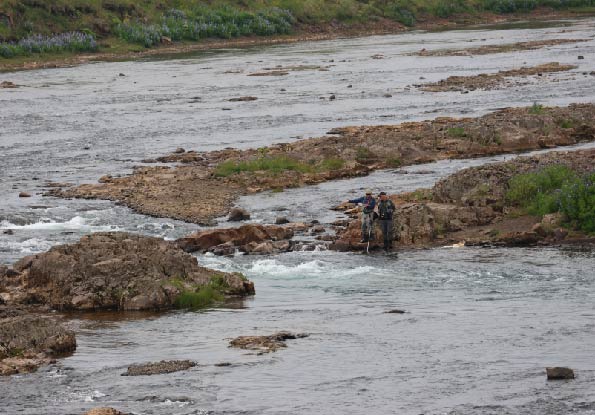
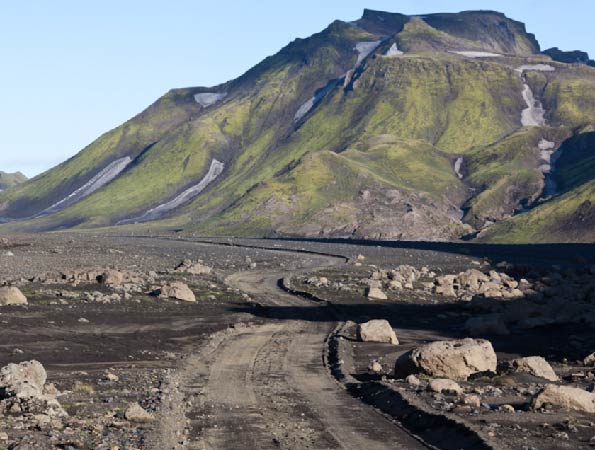

Many roads in urban areas, rural areas, and the highlands can be traveled in a car with either two- or four-wheel drive.
It is popular to travel by car with a guide on gravel roads in the countryside, mountain roads in the highlands, and paved roads in urban and rural areas. At the same time, one can visit and explore exciting places, museums, and natural wonders. The roads are narrow, and the surface of the gravel and mountain roads can be rough, so it can take a long time to drive on them. Off-road driving is prohibited.
One of the most popular ways to travel around the country is to take a round trip along Highway No. 1 to visit and explore small villages on the coast, natural wonders, and beautiful mountain views nearby.
We recommend the following roads. They are usually suitable for a car with four-wheel drive. The roads are mountain roads and are only open in summer; weather conditions, road conditions, and river water levels can cause them to be closed at this time of year. Here is a short description of the roads and their surroundings. Select the road that best suits you if you want to get to know them better.
Dómadalsleið f-225
Fjallabaksleið nyrðri f-208
Flateyjardalur f-839
Kaldadalsvegur (road 550)
Kjalvegur (road 35)
Lakagígar f-206
Langisjór f-235
Leirdalsheiðarvegur f-899
Skagafjarðarleið f-752
Other roads are just as interesting to go by car but are not presented on the website.
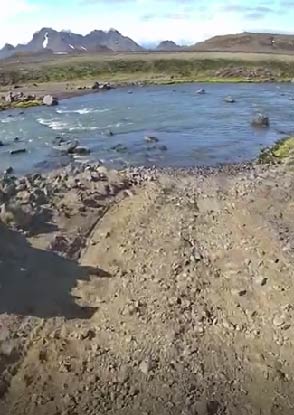
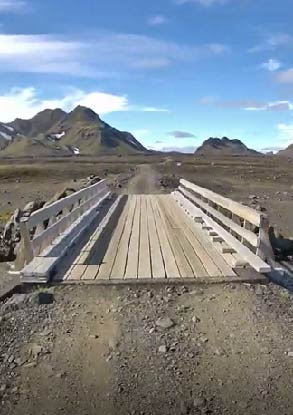

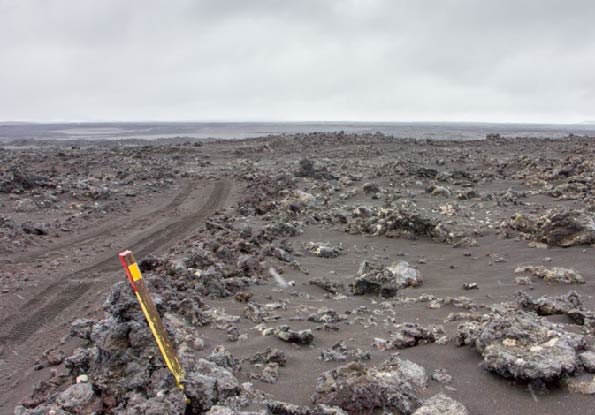
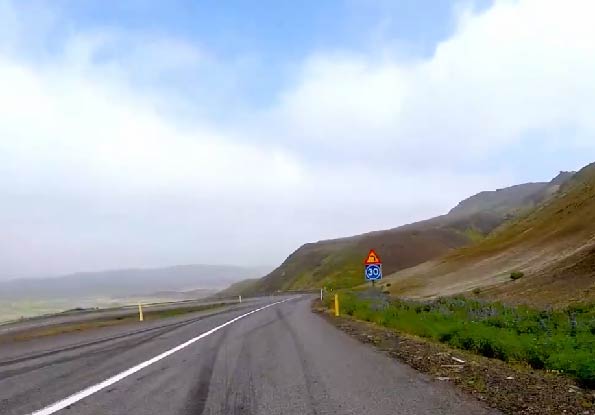
Dómadalsleið f-225. The mountain road Dómadalsleið, also known as Landmannaleið f-225, runs from Landmannavegur (road 26) to the east, North of Hekla and Torfajökull and the intersection north of Frostastaðavatn and is connected to the mountain road Fjallabaksleið norður f-208. Dómadalur is a valley east of Landmannahellir. Landmannahellir is a small cave in Hellisfjall west of Löðmundarvatn. Landmannaleið is one of the highest mountain roads and is just over 700 m above sea level. Several unbridged rivers must be crossed. On the Dómadalsleið route, there is a colorful and magnificent landscape.
Fjallabaksleið. The mountain road Fjallabaksleið norður f-208 runs from Sprengisandsleið f-26 past Hrauneyjarlón and Sigöldulón (Krókslón), which is the largest reservoir in the country and from there into the highlands via Friðland to Fjallabak. There are several waterfalls in the vicinity, including Sigöldugljúfur (gorge). Frostastaðavatn and Ljótipollur are lakes by the mountain road on the way to Landmannalaugar. From Landmannalaugar, the mountain road leads to Ófærufoss in Eldgjá and past one of the most extensive lava flows. Then, the mountain road runs through Skaftártungur to Hólaskjól, with a magnificent waterfall and gorge. The mountain road f-208 ends at Highway 1 by Eldhraun west of Kirkjubæjarklaustur. On the route Fjallabaksleið norður, there is a colorful and magnificent landscape. Several unbridged rivers must be crossed.
Flateyjardalur. The mountain road Flateyjardalur f-839 is in the northern part and runs from Grýtubakkahreppur in Höfðahverfi (road 83) through Flateyjadalur and over Flateyjardalsheiði and ends at the shore. Flateyjardalsvegur is 35 km long and is 220 m high above sea level.
Flateyjardalur is a valley and coast that lies northeast on the peninsula between Eyjafjörður and Skjálfandaflói and extends from Landsendi in the west to Hágöngur in the east. South of Flateyjardalur lies the heath valley Flateyjardalsheiði to the intersection of Fnjóskárdalur and Dalsmynni. Several unbridged rivers must be crossed. Flateyjadalsvegur is a spectacular landscape with a beautiful view.
Kaldadalsvegur. Kaldadalsvegur (road 550) is a 53 km long mountain road that runs from Reyðarvatn, North of Þingvallavatn, between Langjökull and Ok and descends into Borgarfjörður at Húsafell. There are several off-road and rocky sections on Kaldadalsvegur. Langihryggur is the highest part of Kaldadalsvegur, and it runs for 720 m above sea level, and the view is magnificent. The road is the third-highest mountain road in the country and was built in 1830. At that time, it was the only motorable road between the South and the North.
Kjalvegur. Kjalvegur (road 35), takes over from Biskupstungnabraut, is a road in the highlands, east of Langjökull, west of Hofsjökull and runs through the area Kjölur. Kjalvegur runs from Gullfoss to the South and up along Hvítá, past the road to Kerlingafjöll, via Hveravellir, Auðkúluheiði, and Blöndulón and ends at Svínvetningabraut (road 731) at Löngumýri in the northern part of Blöndudalur. Svínvetningabraut connects Kjalvegur to Highway 1 in Langadalur. Kjalvegur is 170 km long and is 700 m above sea level. Kjalvegur is a spectacular landscape.
Lakagígar. The mountain road to Lakagígar f-206 is from Highway 1 by Hunkubakki in Skaftárhreppur west of Kirkjubæjarklaustur and lies by the mountain Laki. Several unbridged rivers must be crossed.
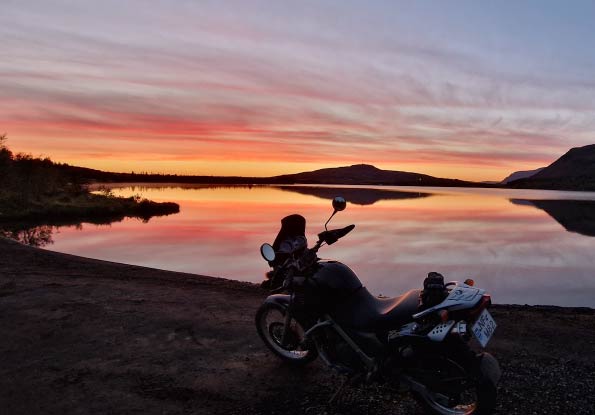
It is fun to ride an engine-powered vehicle, especially in the wilderness. We emphasize that while enjoying beautiful nature that pleases the eye. To ride an engine-powered vehicle, you must have a driving license. Off-road driving is prohibited. Select an engine-powered vehicle that best suits you if you want to get to know it better.
Other equally interesting engine-powered vehicles are not presented on the website. Always be careful when riding an engine-powered vehicle, and don't take more risks than necessary; getting home safely is better.


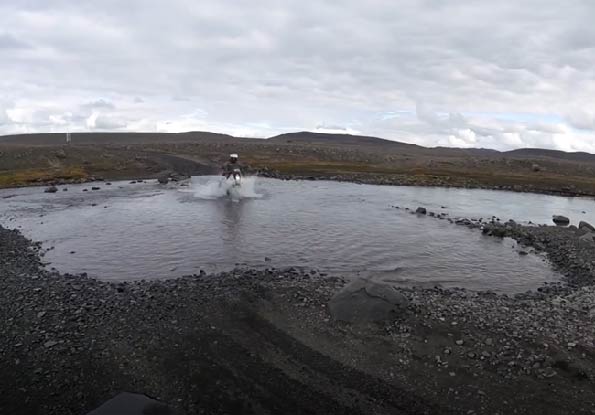


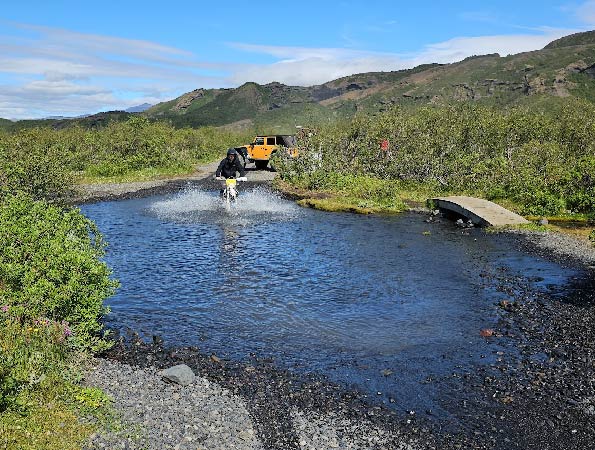

Riding a motorcycle on many types of roads is fun. You need a driver's license and must be physically fit to handle the effort involved.
It is popular to ride a motorcycle with a guide on gravel roads in the countryside and mountain roads in the highlands while visiting and exploring natural wonders. The gravel and mountain roads are narrow, and the surface can be rough, so riding on them takes a long time. Riding a motorcycle off-road is prohibited.
We recommend the following roads. They are usually passable on a motorcycle. The gravel and mountain roads are only open in summer; weather conditions, road conditions, and river water levels can cause them to be closed at this time of year. Below is a short description of the roads and their surroundings. Select the road that best suits you if you want to get to know them better.
Dómadalsleið f-225
Fjallabaksleið nyrðri f-208
Flateyjardalur f-839
Haukadalsvegur f-586
Kaldadalsvegur (road 550)
Kjalvegur (road 35)
Kollafjarðarheiði f-66
Langisjór f-235
Leirdalsheiðarvegur f-899
Skagafjarðarleið f-752
Svalvogavegur f-622
Other roads are just as interesting on motorcycles, but they are not presented on the website. Always be careful when riding a motorcycle, and don't take more risks than necessary; getting home safely is better.

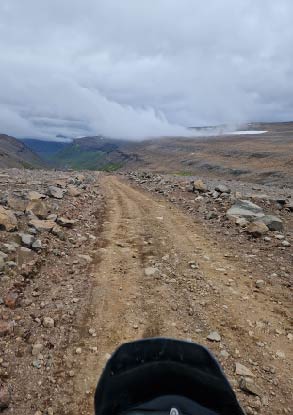
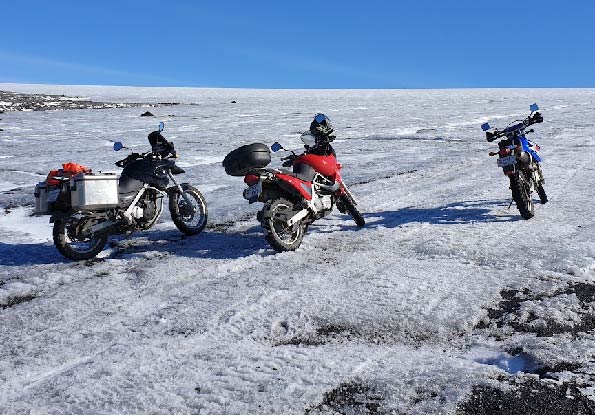


Haukadalsvegur. The mountain road Haukadalsvegur f-586 is on the country's west coast. It is 34 km long and runs from Vestfjarðarvegur (road 60) to Haukadalur south of Búðardalur, over Haukadalsskarð, and to Þjóðvegur no. 1 in Hrútafjörður south of Borðeyri. Several unbridged rivers must be crossed. Haukadalsvegur is a spectacular landscape with a great view because the road lies high above sea level.
Kollafjarðarheiði. The mountain road Kollafjarðarheiði f-66, in the West Fjords, is 22 km long and lies between the south and northern fjords of the Westfjords. The mountain road Kollafjarðarheiði f-66 starts at Vestfjarðarvegur (road 60) at Fjarðarhorn in Kollafjörður and ends at Djúpvegur (road 61) at Laugaból in Ísafjarðardjúp. Several unbridged rivers must be crossed. Kollafjarðarheiði is a magnificent, breathtaking, and rugged landscape with a great view because the road is very high above sea level.
Langisjór. The mountain road Langisjór f-235, in the southern part of the highlands, starts at Fjallabaksleið norður f-208, about 3 km west of Eldgjá and ends at Langisjór. Langisjór is a lake at the edge of Vatnajökull and is 20 km in length and 2 km where it is widest. Langisjór is 73 m, where it is deepest. Langisjór f-235 is 25 km long and is one of the highest roads in the highlands, 690 m above sea level. Several unbridged rivers or streams must be crossed. Langisjór is a magnificent and breathtaking landscape with a beautiful view.
Leirdalsheiðarvegur. The mountain road Leirdalsheiðarvegur f-899 is in the northern part. It runs from Grýtubakkahreppur in Höfðahverfi (road 83) via Leirdalsheiði, over Hávörður, and out Austurárdalur past Hvalavatn and ends at the shore in Hvalvatnsfjörður and is 27 km long.
Hvalvatnsfjörður is a short and shallow fjord at the far end of the peninsula between Eyjafjörður and Skjálfandaflói. It takes its name from Hvalvatn, a lagoon into which Fjarðará falls and is separated from the fjord by a gravel ridge. Hvalvatnsfjörður and the next fjord to the west, Þorgeirsfjörður, is called Fjörður. Several unbridged rivers must be crossed. Leirdalsheiðarvegur is a magnificent and breathtaking landscape with a beautiful view.
Skagafjarðarleið. The mountain road Skagafjarðarleið f-752, in the northern part of the highlands, starts at Varmahlíð (road number 752) and ends at the mountain road Sprengisandur f-26 by Fjórðungsvatn. Varmahlíð is a small village in Skagafjörður, and there is much geothermal heat. Skagafjarðarleið is 121 km long and is one of the highest roads, 745 m above sea level. Several unbridged rivers or streams must be crossed. Skagafjarðarleið is a magnificent and breathtaking landscape with a beautiful view.
Svalvogavegur. The mountain road Salvogavegur f-622 in the Westfjords is 49 km long, and runs from Keldudalur to Dýrafjörður, past Salvogur and Lokinhamrar under Skútabjörg outside Stapadalur in the north of Arnarfjörður.
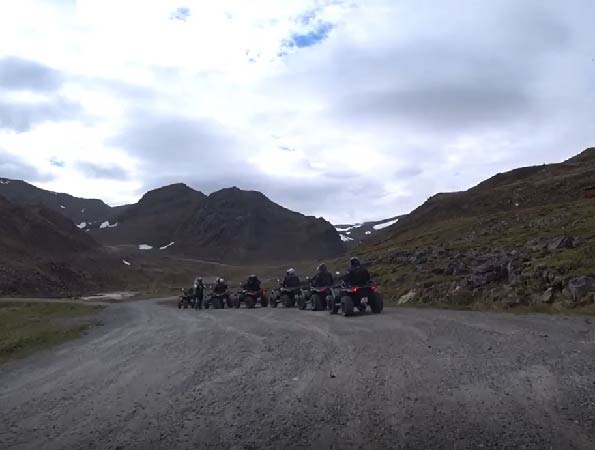

Riding an all-terrain vehicle on many types of roads is fun. You need a driver's license and must be physically fit to handle the effort involved.
It is popular to ride an all-terrain vehicle with a guide on gravel roads in the countryside and mountain roads in the highlands while visiting and exploring natural wonders. The gravel and mountain roads are narrow, and the surface can be rough, so riding on them takes a long time. Riding an all-terrain vehicle off-road is prohibited.
We recommend the following roads. They are usually passable on an all-terrain vehicle. The gravel and mountain roads are only open in summer; weather conditions, road conditions, and river water levels can cause them to be closed at this time of year. Below is a short description of the roads and their surroundings. Select the road that best suits you if you want to get to know them better.
Dómadalsleið f-225
Fjallabaksleið nyrðri f-208
Flateyjardalur f-839
Haukadalsvegur f-586
Kaldadalsvegur (road 550)
Kjalvegur (road 35)
Kollafjarðarheiði f-66
Langisjór f-235
Leirdalsheiðarvegur f-899
Skagafjarðarleið f-752
Svalvogavegur f-622
Other roads are just as interesting on all-terrain vehicles, but they are not presented on the website. Always be careful when riding an all-terrain vehicle, and don't take more risks than necessary; getting home safely is better.
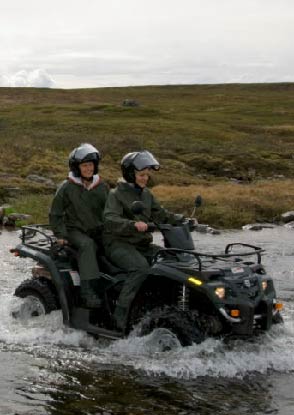
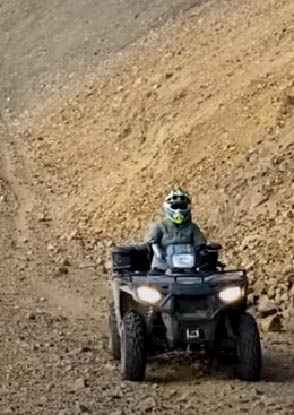
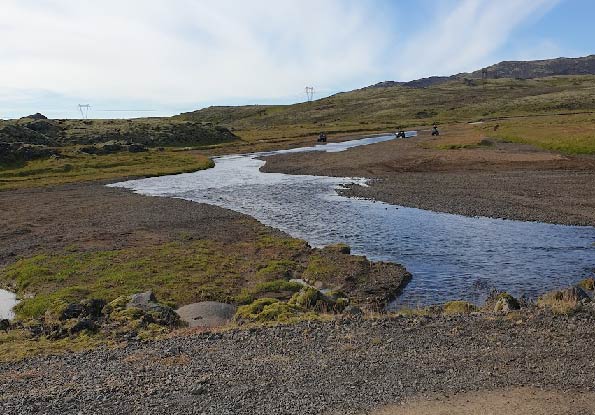

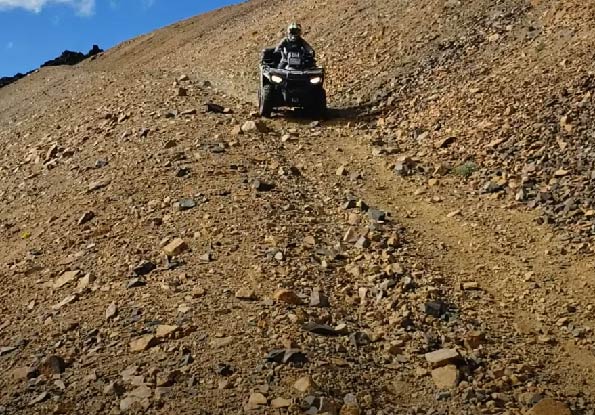

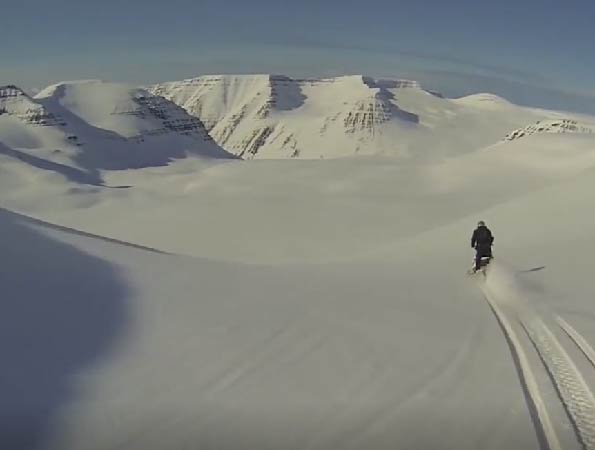
Snowmobiling is fun on many types of snow surfaces. You need a driver's license and must be physically fit to handle the effort involved.
It is popular to ride a snowmobile with a guide on snow surfaces in the countryside and mountains in the highlands while visiting and exploring natural wonders.
Riding a snowmobile in urban areas and on public roads is prohibited although traffic laws provide for exceptions to this. Special rules have also been formulated in some municipalities that allow snowmobiling along specific routes or the shortest route from home to outside the town limits.
We recommend the following routes in winter. They are usually suitable for snowmobiles after it has snowed, however, bad weather can hinder travel at this time of the year. Below is a short description of the routes and their surroundings. Select the route that best suits you to get to know them better.
Dómadalsleið f-225
Fjallabaksleið nyrðri f-208
Flateyjardalur f-839
Haukadalsvegur f-586
Kaldadalsvegur (road 550)
Kjalvegur (road 35)
Kollafjarðarheiði f-66
Langisjór f-235
Leirdalsheiðarvegur f-899
Skagafjarðarleið f-752
Svalvogavegur f-622
Other routes that are just as interesting to explore on snowmobiles are not presented on the website. Always be careful when riding a snowmobile, and don't take more risks than necessary; getting home safely is better.

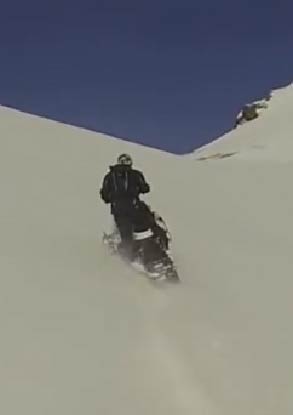
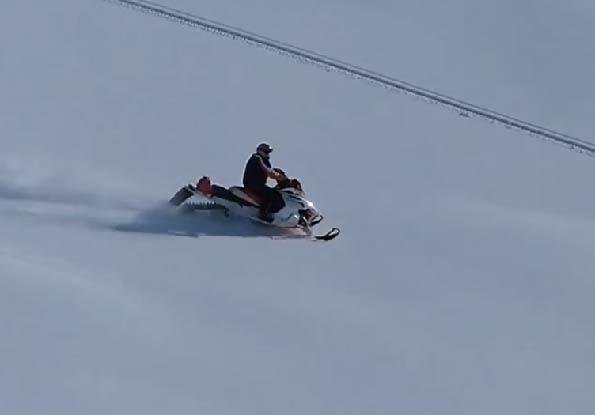
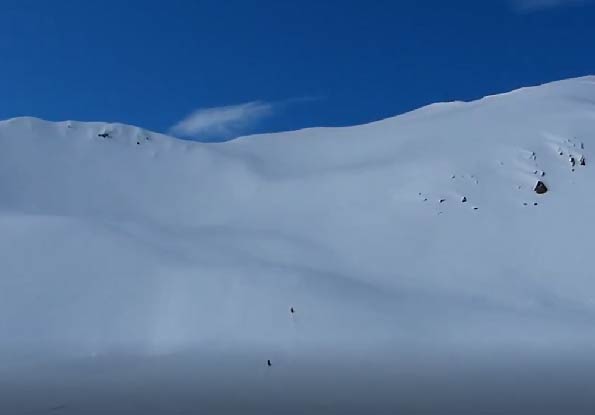
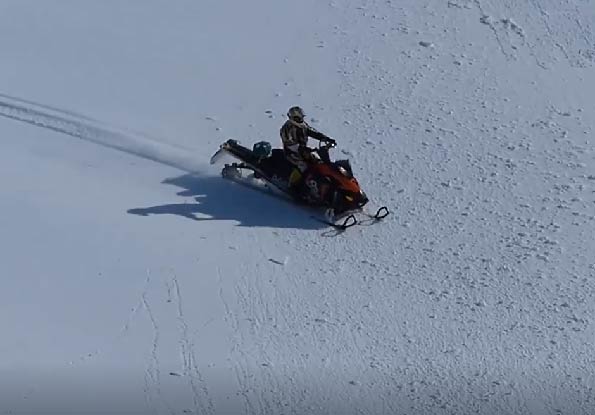
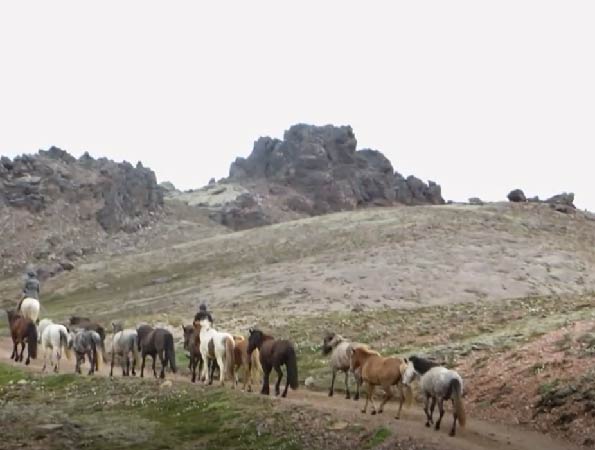
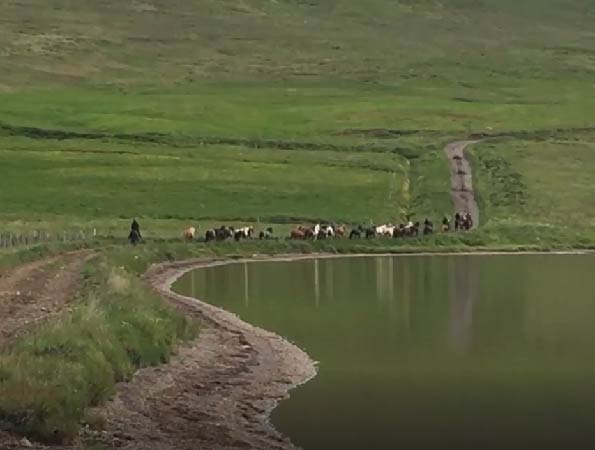
Many roads and trails in urban areas, rural areas, and the highlands can be traveled on a horse. For a long journey, you need to have some experience riding a horse and be physically fit to handle the effort involved.
Riding a horse with a guide on gravel roads in the countryside and mountain roads and trails in the highlands is popular while visiting and exploring natural wonders.
We recommend the following roads. They are usually passable on a horse. The roads are gravel roads, mountain roads, and trails that are only open in summer; weather conditions, road conditions, and river water levels can cause them to be closed at this time of year. Below is a short description of the roads and their surroundings. Select the road that best suits you if you want to get to know them better.
Dómadalsleið f-225
Emstruleið f-261
Flateyjardalur f-839
Leirdalsheiðarvegur f-899
Reykjavík capital city
Skaftártunguvegur f-208
Some other roads and trails, which are not presented on the website, are just as interesting to travel by horse. Always be careful when riding a horse, and don't take more risks than necessary; getting home safely is better.
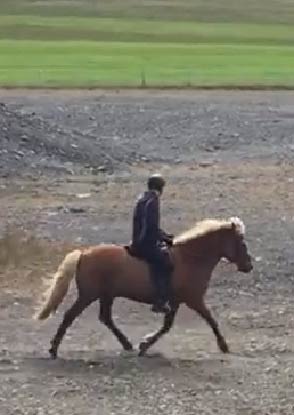




Import of used riding gear and riding clothing to Iceland is prohibited
There are few serious infectious diseases in horses in the country, so there are strict rules on the import of used riding gear and used riding clothing to prevent infectious agents from entering the country to protect the horse from contagious diseases known abroad.
The import of used riding gear is prohibited. As it is impossible to disinfect leather or other materials well enough, importing used riding equipment or other equipment used in the environment of horses abroad is forbidden.
Import of used riding clothing. It is not permitted to import used riding clothing, riding shoes, and other clothing and footwear used in the environment of horses abroad unless it has been washed and disinfected. Customs officers must be notified at the red gate that the riding clothing has not been disinfected in the country of flight. Keflavík Airport disinfects the riding clothes at the owner's expense.
Emstruleið f-261. The trail runs from Landmannaleið f-225, in the southern highlands, between Sátubarn and Grænahlíð to the mountain road Emstruleið. The route runs over Pokahryggur, down to Vestur - Reykjadalur on the west
side of Laufafell, 18 km long, then the route follows Fjallabaksleið south f-210, which is 37 km long and goes to Álftavatn, and then to Hvanngil, and the route ends on the mountain road Emstruleið f-261, which runs down to Fljótshlíð. Several unbridged rivers must be crossed. Landmannaleið - Emstruleið is a magnificent and breathtaking landscape with a beautiful view.
Reykjavík. In the capital city, many riding roads lead from the stables. E.g., the riding trail around Rauðavatn and in Heiðmörk. Both riding routes are not long and take a relatively short time. There are also many riding roads in Reykjavík's neighboring towns, i.e. Kópavogur, Mosfellsbær and Hafnarfjörður. E.g., the riding trail around Helgafell in Hafnarfjörður.
Skaftártunguvegur f-208. The mountain road Skaftártunguvegur runs from Highway 1 by Eldhraun, in the southern part and ends at Háfjallamiðstöðin in Hólaskjól. Hólaskjól is by Lambskarðshólar, up by a lava tongue that flowed when Eldgjá erupted in the years 934 - 940. On the lava tongue is Syðri-Ófærufoss (Litlti Gullfoss). Skaftártunguvegur from Highway 1 at Hólaskjól is 35 km long. Skaftártunguvegur to Hólaskjól is a spectacular landscape with a beautiful view.
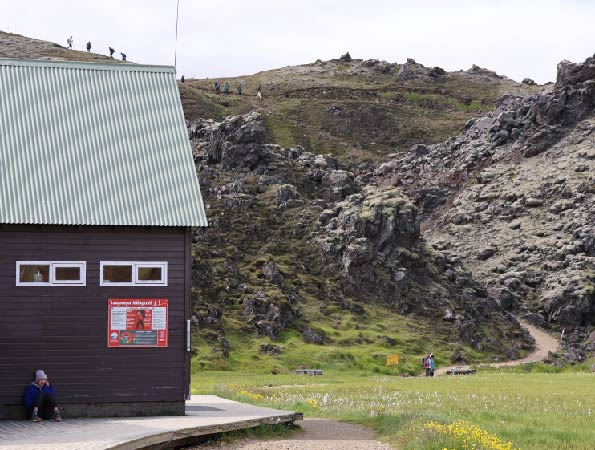
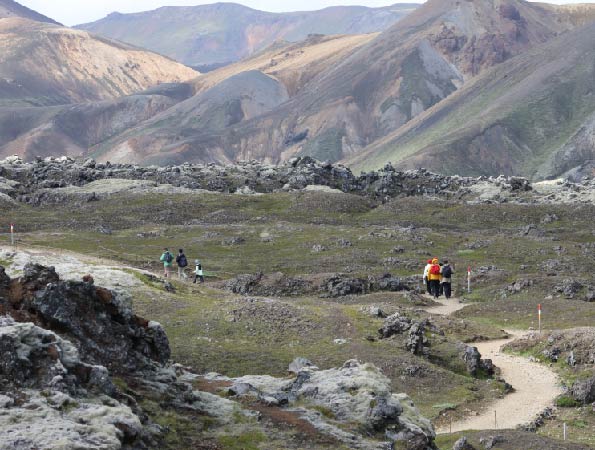
Many hiking trails exist in urban and rural areas in the highlands and wilderness. In a long journey, you need to be physically fit to handle the effort involved in hiking.
It is popular to walk with a guide around the country while visiting and exploring natural wonders.
We recommend the following hiking trails. They are usually passable in the summer and some of the trails are closed in wintertime. Below is a short description of the trails and their surroundings. Select the trails that best suit you if you want to get to know them better.
Fimmvörðuháls (unique nature)
Kerlingarfjöll og Hveravellir (unique nature)
Laugavegur (unique nature)
Reykjavík capital city
Skaftafell (unique nature)
Stórurð (unique nature)
Other hiking trails are just as interesting to walk as those that are not presented on the website. Always be careful when hiking, and don't take more risks than necessary; getting home safely is better.
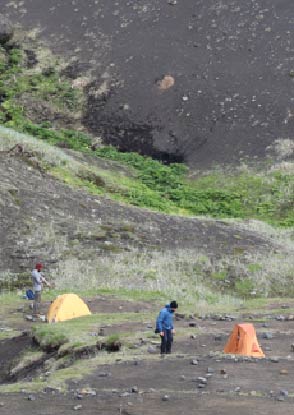


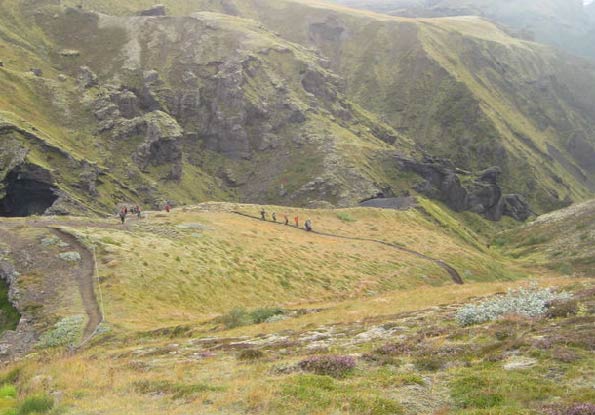
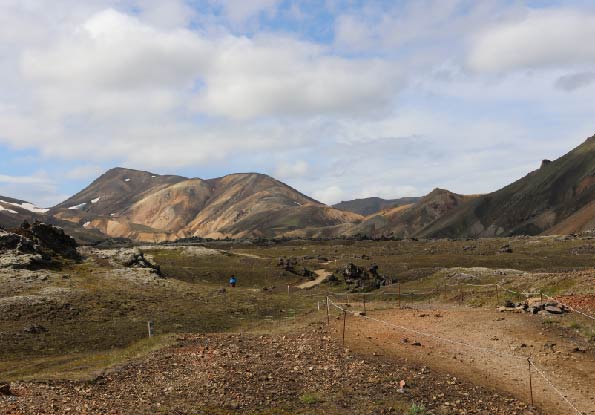
Fimmvörðuháls. The hiking trail over Fimmvörðuháls from Skógar to Þórsmörk lies between Eyjafjallajökull and Mýrdalsjökull. The hiking trail is 22 km long and reaches a peak of 1,000 m above sea level. The hiking trail over Fimmvörðuháls takes up to two days. There are two mountain huts: Baldvinsskáli and Fimmvörðuskáli. The landscape on the hiking trail is diverse, with many small waterfalls and beautiful views.
The eruption at Fimmvörðuháls began on March 21, 2010, and lasted 22 days. The lava flow from the eruption fissure formed the highest lava waterfall in the world, flowing down into a gorge near the eruption fissure. The lava waterfall was 200 meters high. Magni and Móði are the two craters that formed in the eruption.
Kerlingarfjöll og Hveravellir. Kerlingafjöll is in the highlands near Kjalvegur (road 35). Hiking through Hveradalir and its surroundings in the Kerlingarfjöll, you will see colorful soil and many boiling hot springs. There are walking paths in the area.
Hveravellir is in the highlands near Kjalvegur (road 35). Hveravellir is between Hofsjökull to the east and Langjökull to the west. Walking through Hveravellir, you will see the hot spring and the surrounding area. Ruins of an outlaw lair from the 17th century are at Hveravellir.
Laugavegur. Laugavegur is the hiking trail between the hot springs area of Landmannalaugar and Þórsmörk. The hiking trail is 54 km long and rises 1050 m above sea level or 470 m above lava and surrounding sands.
The walking route on Laugavegur takes up to five days.
A few mountain huts are on the way: Hrafntinnusker, Álftavatn, Hvanngil, Botnar in Emstrur and Húsadalur, Langadalur, or Básar in Þórsmörk. The landscape on the hiking trail is very diverse and colorful, with high-temperature areas. National Geographic has listed the trail as one of the twenty best trails in the world.
Reykjavík. There are many interesting hiking trails in the capital city, and the neighboring towns of Hafnarfjörður and Mosfellsbær. For example, there is a trail on Esja mountain, Heiðmörk, Helgafell mountain, Grímannsfell mountain, Elliðaárdalur, and Mosfell mountain, to name a few; these trails are relatively short.
Skaftafell. Is near Highway 1 on the southern side and is in the Vatnajökull National Park. There are many interesting hiking trails in Skaftafelli and the surrounding area. E.g. the hiking trail to Svartafoss, Hvannadalshnjúkur, Skaftafellsjökull, and Svínafellsjökull, to name a few, are relatively short hiking trails.
Stórurð. Is near Dyrfjöll in the eastern part. Stórurð is a spectacular landscape with large boulders, blue-green ponds, and flat areas with grass. There are several marked hiking trails in Stórurð. In Stórurð, it is very snowy in the winter, and the snow melts slowly in the spring, so it is not recommended to walk through Stórurð until the middle of summer and until the end of summer. The walkthrough of Stórurð is relatively long and takes one day.
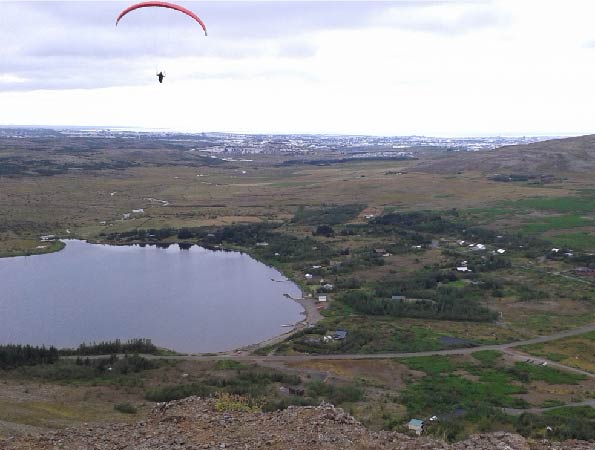

It's fun to make your body work and relax while improving your health, strength, stamina, and endurance.
In some of the activities, the physical strength and endurance of the participants can be severely tested. You must know the activity and have the physical strength and stamina to withstand the effort involved.
When the body has been working hard, it is convenient to relax in a warm pool to relax the muscles and let the fatigue go away from the body.
We recommend the following activities. Below is a short description of the activity and their surroundings. Select the activity that best suits you if you want to get to know them better.
Other activities are equally exciting but are not presented on the website. Always be careful when doing this activity, and don't take more risks than necessary; getting home safely is better.
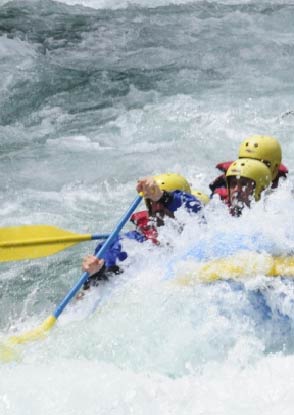
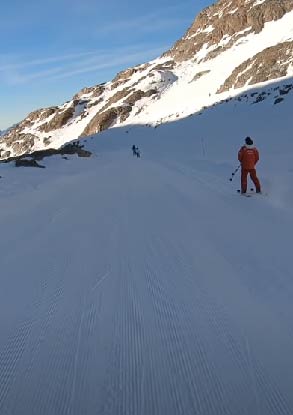
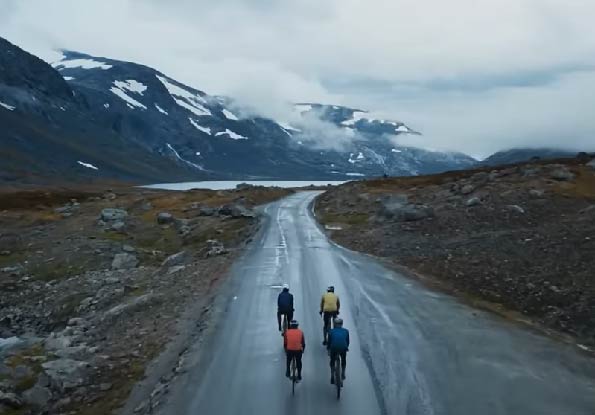


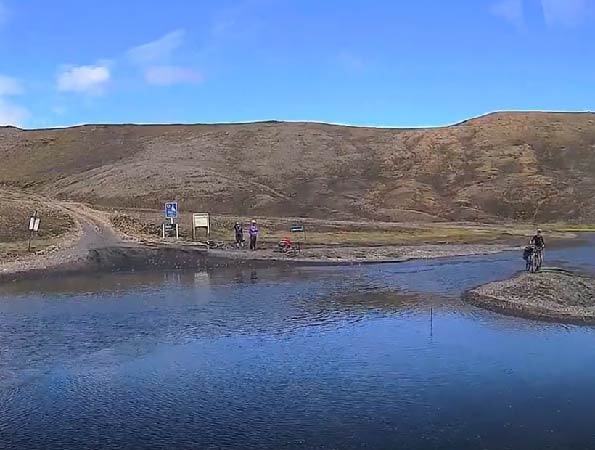
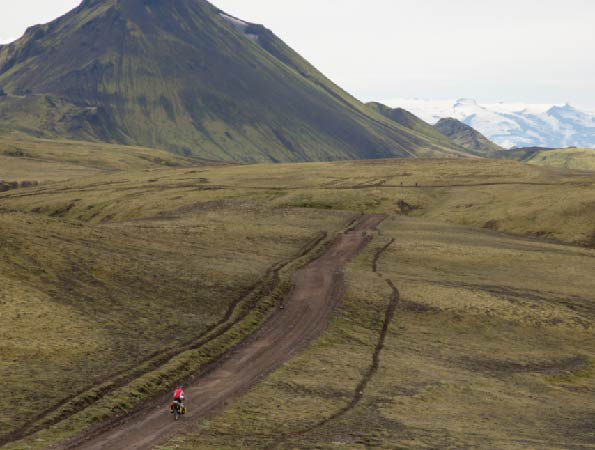
Many bicycle roads exist in urban and rural areas in the highlands and wilderness. To handle the effort involved in a long journey, you must be physically fit and have bicycle experience.
It is popular to ride a bicycle with a guide on gravel roads in the countryside and mountain roads and trails in the highlands while visiting and exploring natural wonders.
We recommend the following bicycle roads. They are gravel and mountain roads, which are usually passable on a bicycle in summer; weather conditions, road conditions, and river water levels can cause the roads to be closed at this time of year. Below is a short description of the bicycle roads and their surroundings. Select the roads that best suit you if you want to know them better.
Dómadalsleið f-225
Eyjafjarðarleið f-821
Fjallabaksleið nyrðri f-208
Flateyjardalur f-839
Kaldadalsvegur (road 550)
Kjalvegur (road 35)
Langisjór f-235
Leirdalsheiðarvegur f-899
Reykjavík capital city
Skagafjarðarleið f-752
Svalvogavegur f-622
Other bicycle roads are just as interesting to ride as those not presented on the website. Always be careful when riding a bicycle, and don't take more risks than necessary; getting home safely is better.


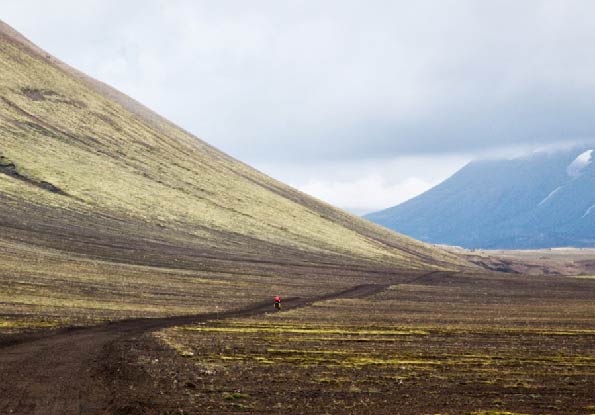
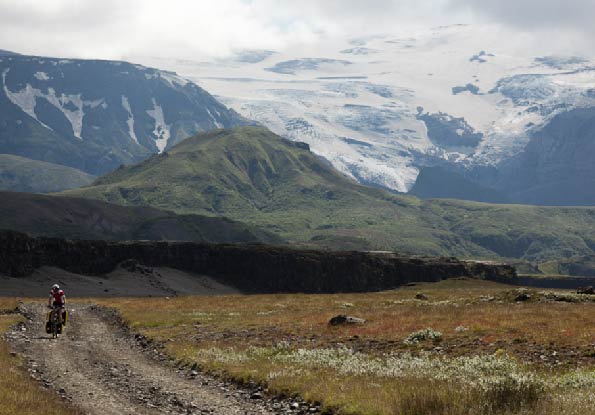
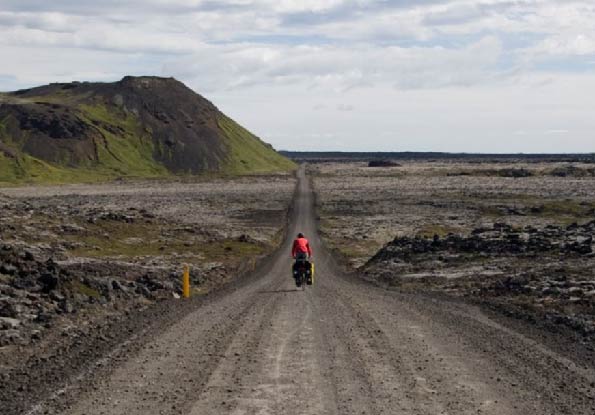
Dómadalsleið. The bicycle mountain road runs from Dómadalsleið f-225, in the southern highlands, from Sátubarn on Dómadalsleið and to Hrafntinnusker. Hrafntinnusker is a 1,100 m high mountain above sea level in Austur-Reykjadalur, east of Hekla. Hrafntinnusker is in the Torfajökull area, one of the country's highest high-temperature areas. There are steam hot springs, colorful mud hot springs, and water hot springs.
The route runs over Pokahryggur over Sléttahraun and along Austur - Reykjadalur over Hrafntinnuhraun and ends at the mountain hut in Hrafntinnusker. Several unbridged rivers or streams must be crossed. The route is magnificent and has breathtaking scenery with beautiful views.
Eyjafjarðarleið. The bicycle mountain road Eyjafjarðarleið f-821 is on the northern part of the highlands runs from Eyjafjörður across the highlands
and ends at Sprengisandsleið. The route is one of three routes of Sprengisandsleið f-26 on the north side. Eyjafjarðarleið is 940 m above sea level, is very snowy in the winter, and usually opens late in the summer. Eyjafjarðarleið is 43 km long, and the road has a rough surface. Eyjafjarðarleið is a spectacular landscape with a beautiful view.
Reykjavík. There are many interesting cycle paths in the capital and the neighboring towns, Kópavogur, Hafnarfjörður, and Mosfellsbær. You can choose short distances that take a short time or long distances. The cycle paths are usually open all year except for heavy snow.


To participate in other physical activities with a guide, you need to know the activity and must have physical strength and endurance to withstand the stress the activity places on your body. The appropriate safety equipment is required to ensure safety. Bad weather and the risk of avalanches can prevent activities from being carried out.
Climbing. Climbing in rock belts up to 30 meters high with associated climbing equipment, e.g., in Hnappafellshamrar in Öræfi or Vesturhamrar in Stardalur in Mosfellsbær. Ice climbing on glaciers and frozen waterfalls with associated climbing and safety equipment, e.g., Svínafellsjökull.
Diving. Diving and surface diving in lakes, e.g., Silfra in the National Park at Þingvellir or diving in the sea.
Sail a kayak and river rafting. Kayaking and rubber boats are sailing at sea by the coast, on mountain lakes, on water-rich and river-heavy rivers (river rafting), e.g., down the river Hvítá. The river Hvítá is a glacial river in the southern part, which originates in Hvítárvatn, just above Bláfell, below Langjökull.
Skiing. Skiing in the mountains and glaciers with associated safety equipment, e.g., in Snæfellsjökull, in Hvannadalshnúkur, in Tröllaskagi, in Eyjafjallajökull and Birnudalstindur in Kálfafellsfjöll the South of Vatnajökull in Bláfjöll and Skálafell in Reykjavík to name a few.
Other physical exertion activities are just as interesting to participate in that are not presented on the website. Always be careful when doing these activities, and don't take more risks than necessary; getting home safely is better.

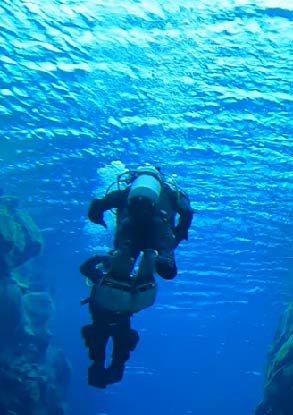
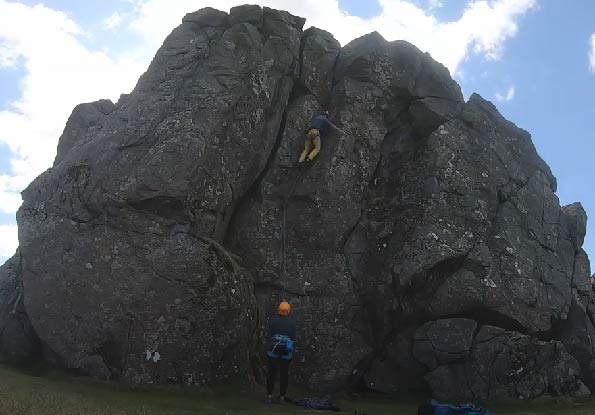
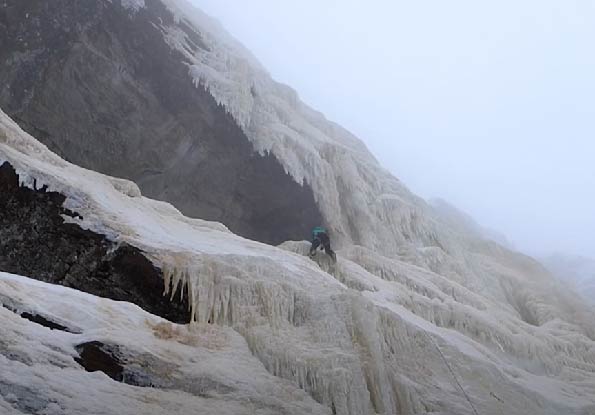
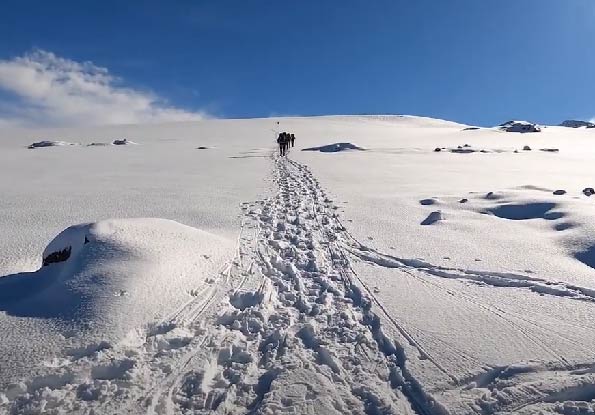
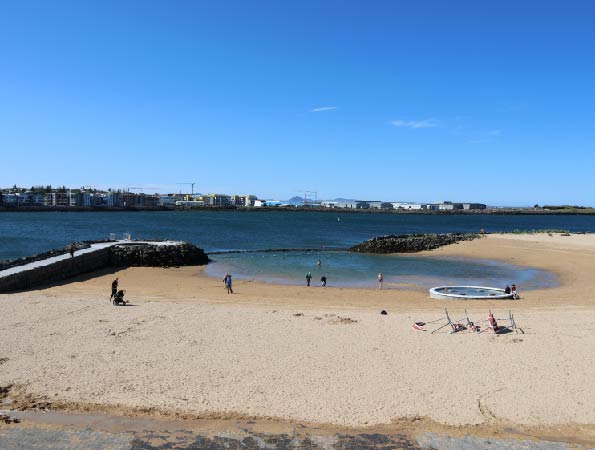

Warm water is believed to positively affect the soul and body. After a hard day's work, nothing is better than relaxing in a warm pool, letting the fatigue leave your body, and feeling your muscles relax. After being in warm water, you feel physically and mentally outstanding, and your breathing becomes easier.
The country has many natural warm pools of different sizes that are warm enough to bathe in. Some of them are in settlements, while others are in the wilderness in the highlands. They are in a stunning environment, usually surrounded by mountains and glaciers. Warm water flows into them from hot springs located near the pools. The pools generally have no changing facilities, so you must change clothes in the open air. Natural pools are outdoors, so they can be contaminated because wild animals, especially birds, can carry parasites and have easy access to the water in the pool. These parasites can be transmitted to humans, causing itchy skin. Natural pools are, e.g., Hellulaug á Vestfjörður is on the shore not far from Flókalundur. Hrunalaug is a few kilometers from Flúðir. Hveravellalaug is in a warm stream that flows through the Hveravellir area, and Landmannalaugar is at the lava's edge at the same name's place.
There are many natural warm pools where changing facilities and sanitary facilities have been built, e.g., Guðlaug in Akranes and Ylströnd in Reykjavík, to name a few. Warm water from warm springs flows into them. In these pools, there is a risk that parasites from wild animals, especially from birds, will enter the pool water, which can then be transmitted to humans and cause itchy skin.
There are many swimming pools which are cleaned regularly, and the pool water is chlorinated. These pools are usually in towns around the country, e.g., Árbæjarlaug in Reykjavík, Borg in Grímsnes, Eigilsstaðar, Hornafjörður, Húsavík, and Stykkishólmur, to name a few. All these pools have a pool where you can swim and warm pools for relaxing.
Always be careful when near water; the pool environment can be slippery if wet. Do not take more risks than necessary; getting home safely is better.

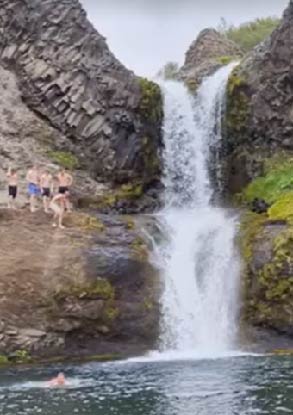


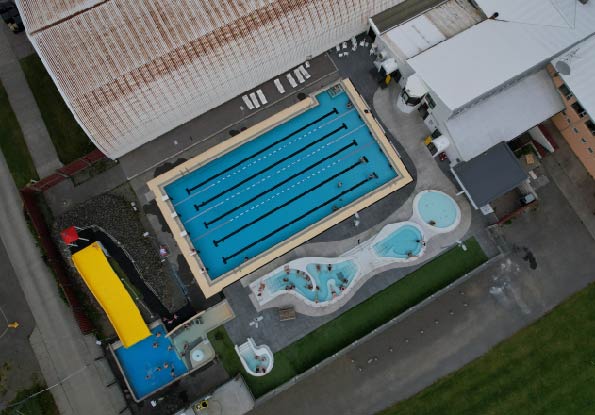
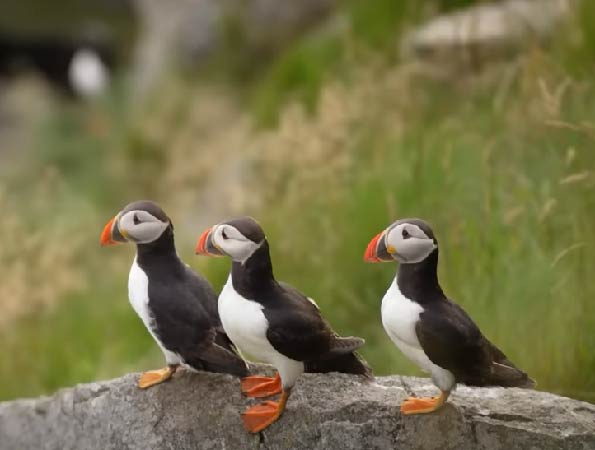
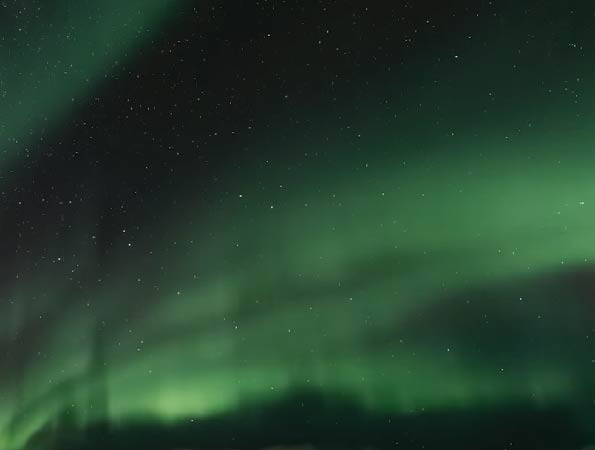
If you are a nature lover and are interested in inspecting and taking pictures of Iceland's natural wonders and wildlife. In that case, we recommend the following nature and wildlife inspection, which is briefly discussed.
Cave and ice cave inspection. Several lava and ice caves can be explored, e.g., Raufarhólshellir, Landmannahellir, and ice caves in Kverkfjöll and Langjökull. Cave inspection can be risky even if protective equipment is used. Rocks and ice cubes can fall from the walls and ceiling. Cave inspection can be a dangerous activity.
Bird watching. Bird watching takes place in their natural environment. There are many bird-watching places, e.g., Djúpivogur, Eyjafjörður, and Breiðafjörður, to name a few.
Glacier walk. When walking on a glacier, participants must use the appropriate safety equipment. Glaciers that you can walk on: Sólheimajökull and Breiðamerkurjökull, to name a few.
Nature and wildlife photography. You can take pictures of Iceland's natural wonders and wildlife in many places.
Northern light inspection. You can see the northern lights in many places when it's dark in the winter. The main places to visit are Bláfjöll, Kirkjufell, and Þingvellir, to name a few.
Scenic flights. Take a sightseeing flight by helicopter or airplane to view nature and photograph, departures from Reykjavík and Akureyri.
Whale watching. You can take a whale-watching boat to see the whales in their natural habitat. During a whale-watching trip, you are required to use the appropriate safety equipment. Sailing is done from several ports around the country, e.g., Reykjavík, Húsavík, and Dalvík.
Other activities are equally exciting but are not presented on the website. Always be careful when doing the activity, and don't take more risks than necessary; getting home safely is better.
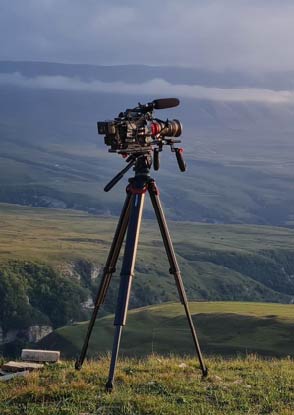

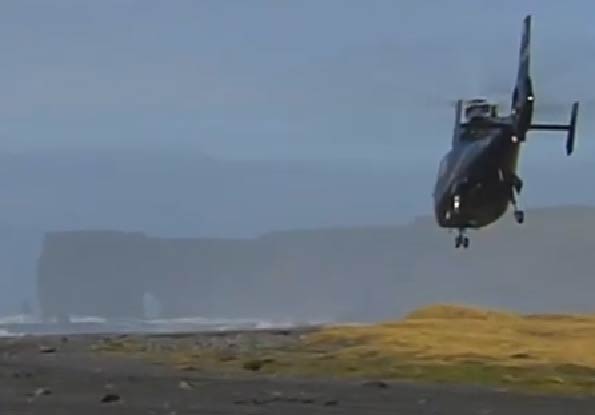
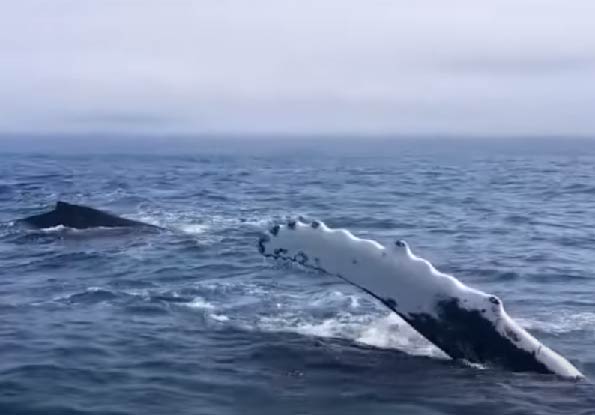
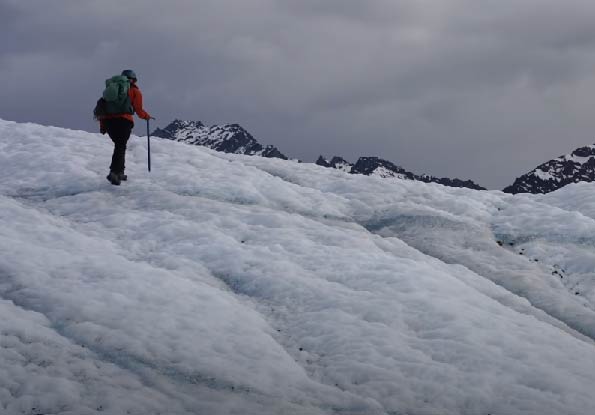

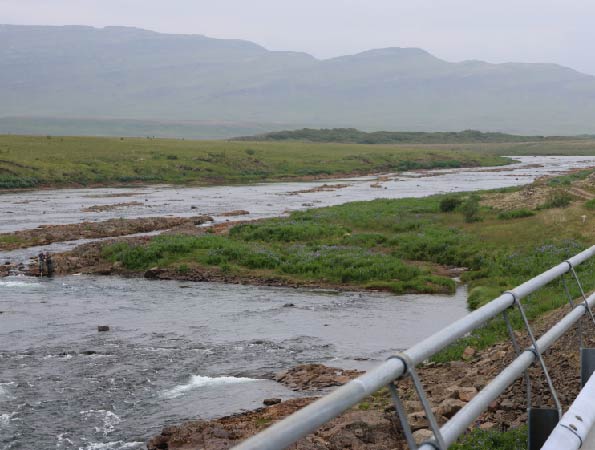
If you are interested in angling and fly fishing, we recommend fishing in rivers, freshwater, or the sea with a guide. Most fishing spots in rivers or fresh lakes are in beautiful surroundings.
You must have a fishing permit from the landowner, and you must record the catch. Salmon, trout, and sea trout fishing in rivers, lakes, and the sea can be practiced all over the country, e.g., in Þingvallavatn in the southwestern part, in Kaldakvísl in the highlands, in Veiðivötn in the highlands, in Eystri-Rangá in the southern part, in Elliðaá in Reykjavík, in Laxá in the western part, in Miðfjarðará in the northern part, in Tungufljót in the south part. Fly fishing for salmon is allowed from May 20 to the end of September, and the period for trout and sea trout fishing is from the beginning of April to end of October.
The imported fishing equipment must be disinfected
There are few pathogens in Icelandic salmon fishing rivers. Infectious severe diseases, including common viral diseases, have never been diagnosed in freshwater fish in this country. It is, therefore, obligatory to disinfect imported angling equipment for fishing in freshwater, i.e., Fishing rods, reels, hooks, flies, waders, and fishing nets. Upon arrival in the country, it is possible to disinfect fishing equipment at the airport in Keflavík. The customs officers at the red gate must be notified that a veterinarian in the home country has not disinfected the fishing equipment. Keflavík Airport disinfects the fishing equipment at the owner's expense.
Packaging requirements for used angling equipment
An airline that flies to the country requires packing used fishing rods and fishing equipment in safe packaging. Check the packing requirements of the airline you plan to fly with.
Always be careful when near fresh water or the sea, and don't take more risks than necessary; getting home safely is better.
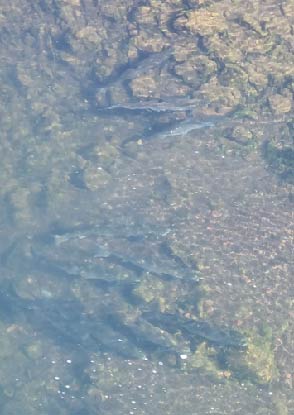

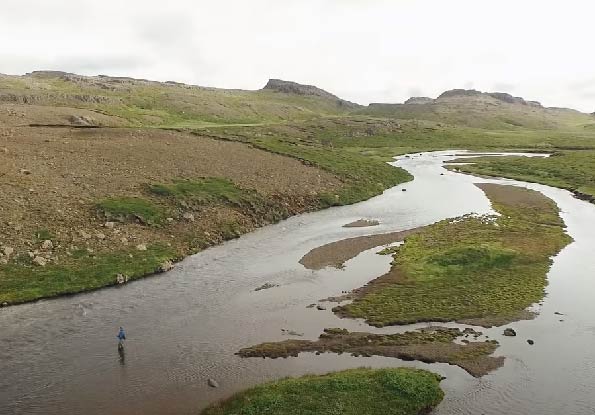
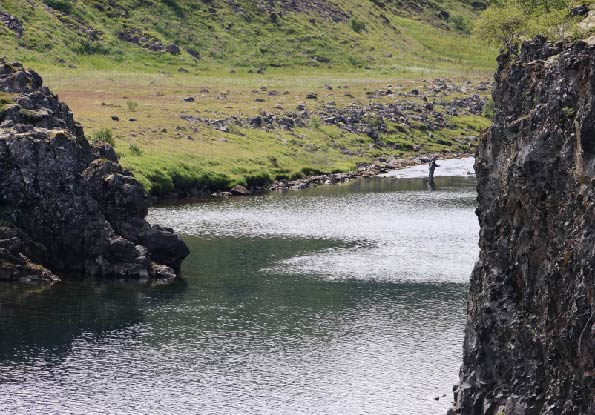
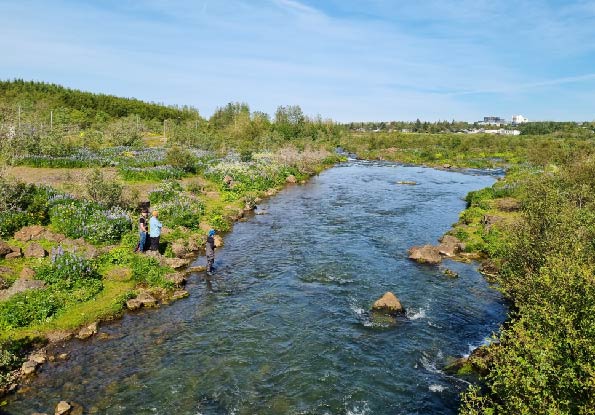
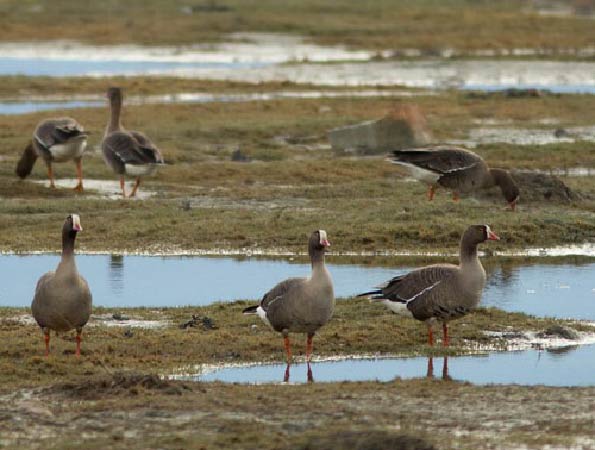
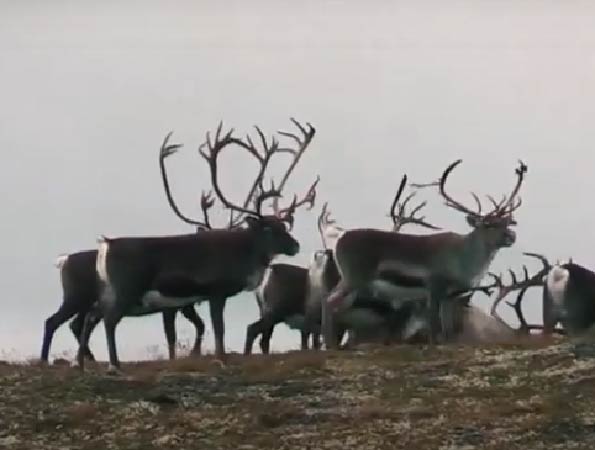
If you want to go hunting in Iceland, you need a license for a firearm and a hunting card. The National Police Commissioner issues a firearm license, and the Environmental Agency issues a hunting license. To get a hunting license, you must pass an aptitude test in wild animals, their environment, and firearms handling. If you want to do reindeer hunting, you must pass a shooting test and be accompanied by a guide.
All individuals residing in Iceland and abroad with a firearms license and a hunting license are allowed to hunt wild animals in the wilderness, at sea, on public land, and pastures unless the land has been protected for wildlife or privately owned. You must have permission from the landowners to hunt on their land and you must keep records of all catches. Hunting occurs along the coast, at sea, in the countryside, highlands, and in the wilderness. Most hunting spots are in stunning surroundings. Below is a short description of wildlife hunts and requirements. Select the topic that best suits you if you want to know them better.
Hunting card
Hunting license
Hunting wild birds
Hunting wild foxes
Hunting wild reindeer
Import and export of firearms
Packaging requirements
Always be extra careful when handling firearms and hunting, and don't take more risks than necessary; getting home safely is better.


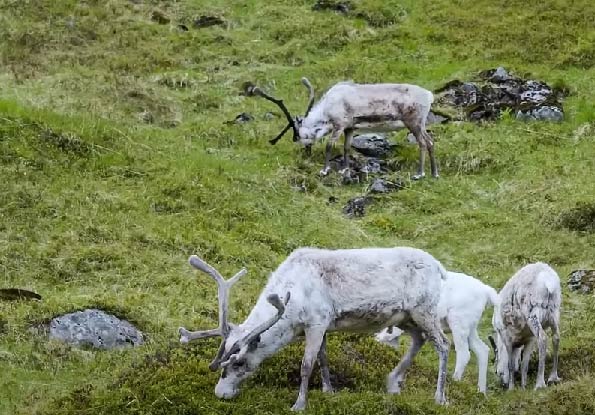
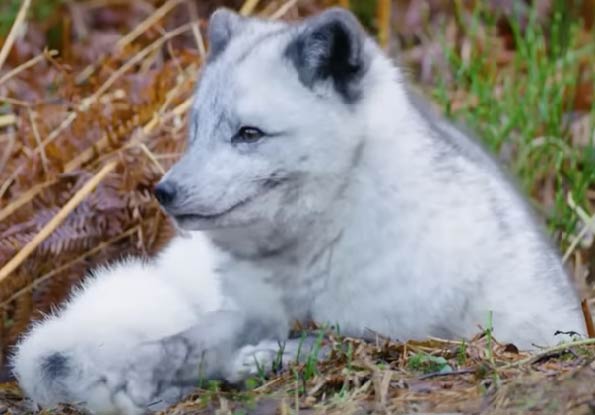
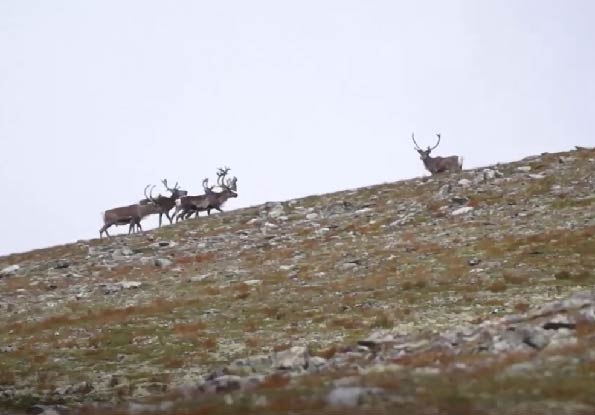
Hunting card
Everyone who hunts wild animals in Iceland, including individuals living abroad, must have a hunting card issued by the Environment Agency. To obtain a hunting card, you must take a test of wild animals, their environment, and firearm handling. The Environment Agency holds courses for the preparation of aptitude tests. The hunting card shows the validity of the period and the species of animal that the person in question is authorized to hunt. You must keep a hunting report on the catch during the validity period.
The hunting year is the calendar year (January - December). The hunting cardholder must submit a hunting report for the previous hunting year before 1. April to the Environment Agency. The hunting card must be taken with you when you go hunting.
Hunting license
You must apply for a hunting permit to hunt wild male or female reindeer to the Environment Agency before 15. February. If there are more applications than the number of reindeer that may be hunted, a random extract is used to allocate hunting permits. The individual with the lowest random number gets a shooting license to hunt reindeer. If the applicant has not been granted a hunting license for the last six years that he has applied for, his application is placed on the waiting list for the primary choice in the category applied for.
Hunting wild birds
Wild birds can be hunted from August - September to mid-March in the wilderness and by the sea, on public land, and on pastures where protection has been lifted, and the land is not privately owned. Bird species that can be hunted are non-protected species of geese, ducks, and cormorants.
The white-fronted goose population is at an all-time high, and the Environment Agency asks hunters to keep this in mind during the goose-hunting season if they must choose between graylag geese and white-fronted geese. The white-fronted goose population is about five times larger than the graylag goose population.
Hunting wild foxes
Wild foxes can be hunted from the beginning of August to the end of April in the wilderness, out by the sea on public land, and on pastures where conservation has been lifted, and the land is not privately owned.
Hunting wild reindeer
All individuals residing in Iceland and those living abroad with a firearms license, hunting license, or hunting card must pass a shooting test and be accompanied by a reindeer hunting guide. Reindeer hunting is allowed in certain areas, divided into nine regions in the eastern part.
From 15. July to 15. September, you can hunt a male reindeer, and from 1. August to 20. September, you can hunt a female reindeer. During the period from 1. November to 20. November, hunting of female reindeer is permitted in areas eight and nine.
The role of reindeer hunting guides is to accompany the hunter through hunting grounds, help him identify the animals he can hunt, record hunting information on hunting reports, and submit hunting reports to the Environment Agency.
Import and export of firearms
Individuals residing abroad may be granted a temporary license for a firearm for hunting in Iceland for up to three months, provided that the firearm license in their country of residence is fulfilled and they meet other conditions of Icelandic law, including that they may own a firearm and that the firearm may be imported. The National Commissioner of Police issues a license for firearms and notifies the customs authorities of the license issuance.
The licensee must present the export license from the authorities in the country of residence, the firearms license, and the firearm for registration with the customs authorities upon arrival and departure from the country. The customs authorities notify the National Commissioner of Police of the registration in each case.
The owner of a firearm is authorized to lend it to anyone licensed to use the same type for up to four weeks. The person who borrows a firearm guarantees its custody while in his care.
Packaging requirements
An airline flying to Iceland demands that shooting equipment be packed in safe packaging. Firearms or other shooting equipment may not be packed with other luggage; they must be packed separately. Firearms or other hunting equipment for hunting wild animals is only allowed. Firearms must not be loaded and must be stored in a locked suitcase. The included rifle bullets and shotgun shells must be stored in another locked suitcase. Both suitcases must withstand movement and bumps. Check the packing requirements of the airline you plan to fly with.